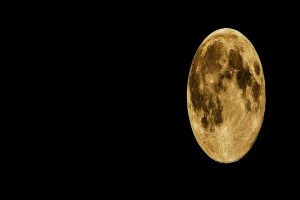
[the_ad_placement id=”adsense-in-feed”]
Possible impact of Earth’s atmosphere on Moon
New Delhi/California: Indian Space Research Organisation – ISRO’s maiden mission to the moon has sent images that show the presence of hematite, a form of rust that normally requires oxygen and water, along the poles. That has scientists puzzled.
A release from NASA’s Jet Propulsion Laboratory at California Institute of Technology in the USA, stated that data from ISRO’s Chandrayaan-1 orbiter, which discovered water ice and mapped out a variety of minerals while surveying the Moon’s surface in 2008, was studied by Shuai Li of the University of Hawaii, which revealed the Moon’s poles had a very different composition than the rest of it.
[the_ad_placement id=”content-placement-after-3rd-paragraph”]
Intrigued, Li homed in on these polar spectra. While the Moon’s surface is littered with iron-rich rocks, he nevertheless was surprised to find a close match with the spectral signature of hematite. The mineral is a form of iron oxide, or rust, produced when iron is exposed to oxygen and water. But the Moon isn’t supposed to have oxygen or liquid water, so how can it be rusting?
The mystery starts with the solar wind, a stream of charged particles that flows out from the Sun, bombarding Earth and the Moon with hydrogen. Hydrogen makes it harder for hematite to form. It’s what is known as a reducer, meaning it adds electrons to the materials it interacts with. That’s the opposite of what is needed to make hematite: For iron to rust, it requires an oxidizer, which removes electrons. And while the Earth has a magnetic field shielding it from this hydrogen, the Moon does not.
“It’s very puzzling,” Li said. “The Moon is a terrible environment for hematite to form in.”
So he turned to JPL scientists Abigail Fraeman and Vivian Sun to help poke at the data and confirm his discovery of hematite.
“At first, I totally didn’t believe it. It shouldn’t exist based on the conditions present on the Moon,” Fraeman said. “But since we discovered water on the Moon, people have been speculating that there could be a greater variety of minerals than we realize if that water had reacted with rocks.”
After taking a close look, Fraeman and Sun became convinced about the presence of hematite at the lunar poles. “In the end, the spectra were convincingly hematite-bearing, and there needed to be an explanation for why it’s on the Moon,” Sun said.
Scientists at the National Aeronautics and Space Administration (NASA) say that this could be because the Earth’s own atmosphere is lending a helping hand which, in other words, means that the Earth’s atmosphere could be protecting the Moon as well. Thus, the Chandrayaan-1 Moon data indicates that the Moon’s poles are home to water, this is what the scientists are trying to decipher.
Union Minister of State for Space, Dr Jitendra Singh informed that as for Chandrayaan-3 was concerned, the launch might now take place somewhere in early 2021. “Chandrayaan-3 will be a mission repeat of Chandrayaan-2 and will include a Lander and Rover similar to that of Chandrayaan-2, but will not have an orbiter,” he said.
The minister further informed that preparations were going on for India’s first ever Human Space Mission, Gaganyaan and the training processes and other procedures were also in place.
“Constraints due to Covid pandemic led to some disruptions in the plan for Gaganyaan but efforts are going on to stick to the timeline of around 2022,” he said.
– globalbihari bureau
[the_ad_placement id=”sidebar-feed”]





